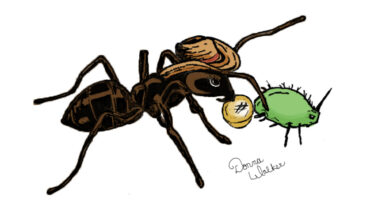Angelica: [Cultivation, Irrigation, Care, Pests and Diseases]
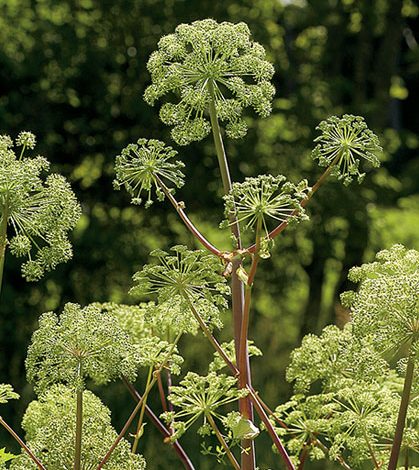
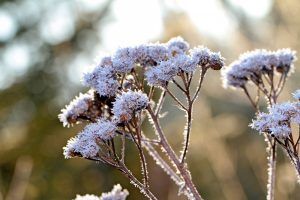 Also known as «The herb of the angels», angelica is a highly appreciated aromatic plant. It is recognized for its strong aroma and for its spicy, bitter and burning taste.
Also known as «The herb of the angels», angelica is a highly appreciated aromatic plant. It is recognized for its strong aroma and for its spicy, bitter and burning taste.
Currently there are about 32 species, including Angelica sylvestris, Angelica officinalis, Angelica razulii, Angelica major, among others.
It is a biennial plant from Europe and Asia which has been cultivated since at least 800 BC. Its cultivation has spread to various countries in the world such as France, Germany, Belgium, among others.
It is frequently used as a remedy to treat digestive problems. However, it is also used as an analgesic, sedative and antianemic.
Important points when planting angelica:
- Scientific name: Angelica archangelica.
- Common Name: Angelica, herb of the angels, herb of the Holy Spirit.
- Height: 2 meters.
- Need for light: Sun exposure and partial shade.
- Temperature: Temperate climates (5ºC and 19ºC).
- Irrigation: Moderate to high.
- Fertilizer: Compost or organic fertilizer.
What characteristics does the angelica plant have?
Angelica is a plant that belongs to the opiate family. It can live up to 3 years if it is well cared for. It consists of a thick, fleshy and blackish root from which a corrugated, reddish and branched stem sprouts, which can reach 1 to 3 meters in height.
Its leaves are alternate, large, lanceolate to elliptical in shape, with a hugging sheath at its base. Angelica flowers are small, with elliptical petals, which bloom the second year during the month of April. These are grouped in large and showy compound umbels.

Each adult plant can have more than 20 umbels. It is possible to find them in different shades: white, pink, yellowish or purple. Angelica fruits are small, 6 to 8 millimeters long, and ovate or elliptical in shape.
The seeds, in turn, are flattened and can produce about 20,000 seeds per plant.
When to plant angelica?
The angelica can be sown during the spring, at the beginning of March or at the end of the summer, during the month of September. If sown during the summer, it will need to be transplanted until the following spring.
Some other specialists recommend that, in addition to sowing during the spring, it is possible to carry out the cultivation of angelica from the end of July until September and even October. Under the cuttings or bush division method, the process must be carried out during the first days of October.
Where to plant angelica?
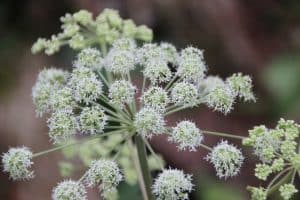 It grows in places with a temperate-cold climate, at temperatures ranging from 5ºC to 19ºC, and with a high content of organic matter in the substrate.
It grows in places with a temperate-cold climate, at temperatures ranging from 5ºC to 19ºC, and with a high content of organic matter in the substrate.
Examples of them are cool and humid places such as forests, marshes or wooded areas. Likewise, it can grow in places exposed to the sun and under shade.
However, it requires good sun exposure to develop its characteristic aroma. In hot areas, it is recommended to locate it in places with light shade to protect it from high temperatures and water evaporation.3
How to prepare the land?

The angelica plant needs deep, well – drained, moist, clayey and calcareous soils. It also grows well in volcanic, slightly sandy and alluvial soils.
The substrate must have a slightly acidic pH (between 4.5 and 7.3) and be well fertilized, either with liquid fertilizer or fermented manure. Likewise, the soil must be nourished with fertilizers that provide phosphorus and potassium.

How do we water angelica?
The angelica plant is very sensitive to lack of water and cannot tolerate drought, especially during the early stages of its growth. Due to the above, the irrigations must be carried out in a constant and moderate way, without saturating or flooding the substrate.
How often do we water the angelica?
It is estimated that irrigation should be done 4 to 6 times during the first and summer. The amount of water will be reduced during the winter and in the rainy season. However, the amount and frequency will depend on soil conditions as well as the weather.

How to plant an angelica step by step?
The angelica plant can be grown through different methods: seeds and division. The steps to cultivate it are shared below.
by seeds
The seeds must be ripe and freshly collected so that they are more likely to germinate.
- Prepare the seeds to refrigerate by giving them at a temperature of 5ºC or less, for 4 to 6 weeks.
- In a seedbed, place the seeds 5 millimeters deep or on a light, moist and humus -rich substrate.
- Locate the seedlings in a place where they can receive indirect sunlight and where they are subject to fluctuations in temperature.
- After 21 days, bring the seedbed indoors to constant temperatures above 15ºC and wait for 3-4 weeks until the seeds germinate.
- Transplant to its final site as soon as the seedlings have reached 20 centimeters in height and water abundantly to maintain the humidity of the substrate.
by division
Before beginning the procedure, it is important to select a mature angelica plant that is in its second year of growth, during its dormant period, before flowering, or during the fall.
- Remove the angelica plant from the ground and divide the roots into 2 or 3 sections, depending on their size.
- Take each segment and plant them every 50 to 60 centimeters apart in a garden bed amended with homemade organic matter such as compost.
- Water abundantly.
What care does angelica need?
Angelica can rarely exceed 3 years of age. However, it is possible to lengthen the life cycle of the plant by removing the flowers from its structure. It is important to keep the substrate free of weeds. This can be done by applying the mulch technique around the plant.

What pests and diseases affect angelica?
The angelica plant is rarely affected by pests and diseases during its growth, except for snails and slugs. However, it can be attacked by the insect Anobicum paniceum, leafminer worms, mites, aphids, and rust (Puccinia).
With regard to diseases, powdery mildew and leaf spot are reported.
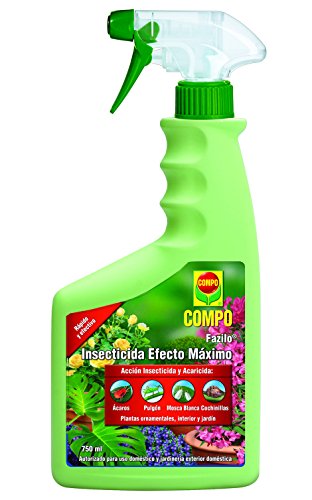
References
- http://www.fundame.org/cientificas/pdfs/extracts/voldos.pdf
- http://www.floraiberica.es/floraiberica/texto/pdfs/10_129_67%20Angelica.pdf
- https://www.google.com/url?sa=t&rct=j&q=&esrc=s&source=web&cd=&cad=rja&uact=8&ved=2ahUKEwju9eyp98bvAhURRa0KHRrPAZ4QFjACegQIAxAD&url=https%3A%2F%2Fdialnet.unirioja.es%2Fdescarga%2Farticulo%2F3177041. pdf&usg=AOvVaw2EMbrs-XYWq-M52iruYN3c
- https://www.mapa.gob.es/ministerio/pags/biblioteca/revistas/pdf_Ferti/Ferti_2009_36_12_14.pdf
- https://gardenerspath.com/plants/herbs/grow-angelica/
- https://www.herbazest.com/herb-garden/growing-angelica
- https://gardenerspath.com/plants/herbs/grow-angelica/


![Photo of Change Soil pH: [Adjust, Change, Raise or Lower it]](https://www.complete-gardening.com/wp-content/uploads/2022/08/change-soil-ph-adjust-change-raise-or-lower-it-390x220.jpg)

